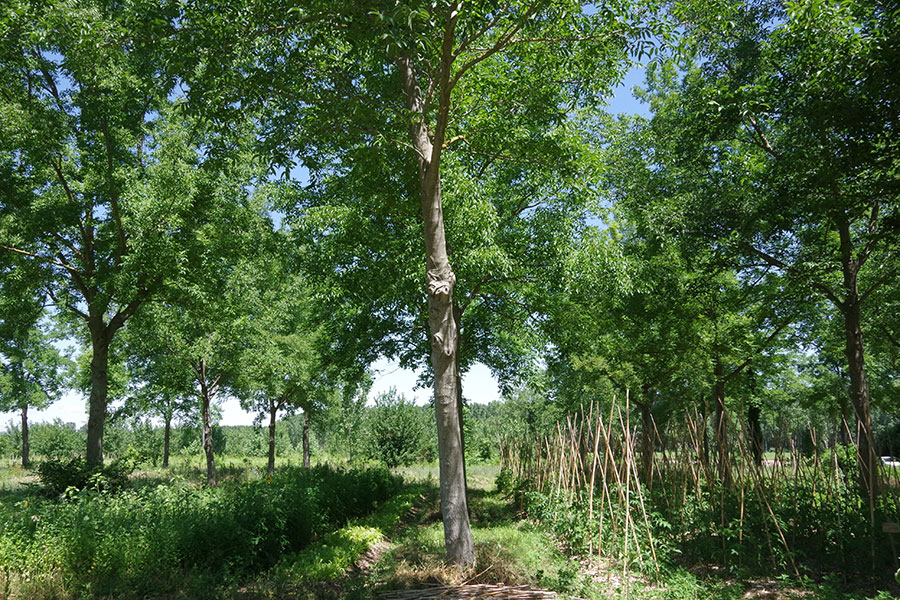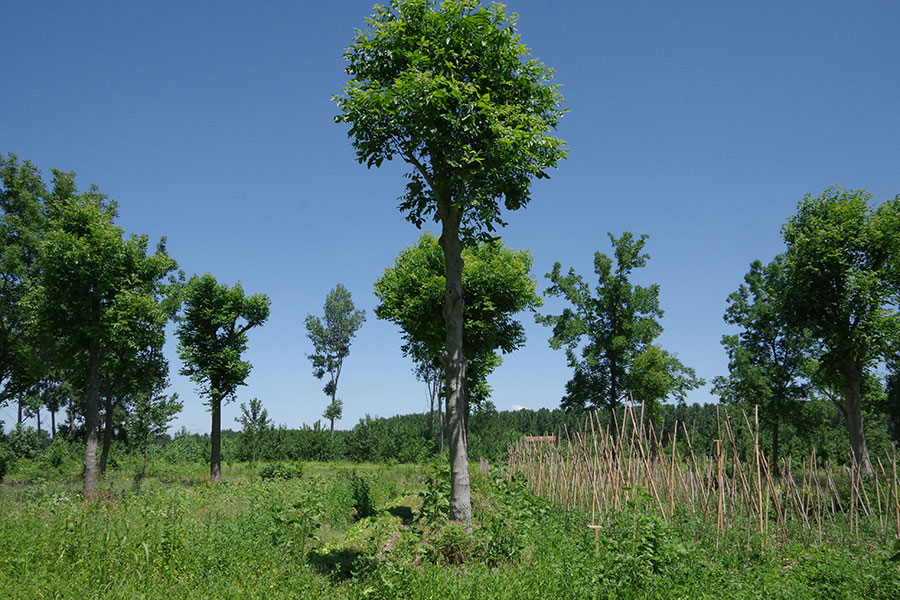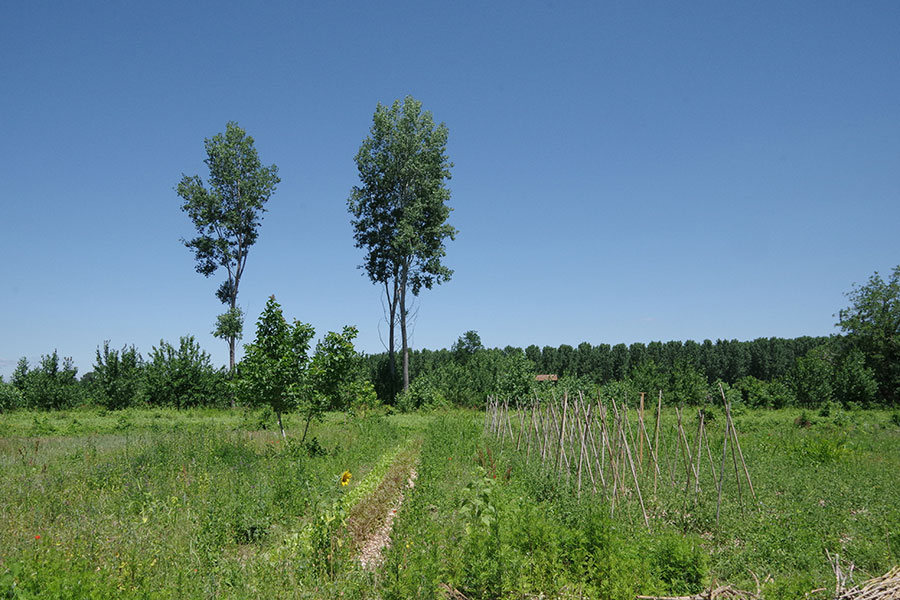microclimate
ACTION 1 - Characterization of microclimate conditions and light competition modelling
Tree alignments can modify light incomes, temperature and humidity conditions for vegetable crops. These effects can be beneficial, moreover in a context of climate change: in summer, during hot and dry periods, trees can act as a "buffer" and reduce the crop water and heat stresses. On the other hand, trees reduce crop sunshine and can also represent a competition.
To what extent do trees change the microclimate and sunshine of plots? How does this vary depending on how the tree crown is managed?
To answer these questions, we set up four different shade modalities on the Roumassouze lands in 2015, using different tree crown management. Trees are pruned every three years, in the same way..
- Soft pruned treatment (annotated “L”): This is the treatment where trees are pruned to obtain a timber log, and where vegetable crops will have the less access to light incomes.
- Pollarded treatment (annotated “T”): All branches were cut at about 2m from the trunk in all direction, resulting in a very limited crown surface.
- Strong pruned treatment (annotated “M”): The trees were pruned with a 6-metre high nacelle to reduce the crown to 4 m in diameter. The tree crown was reduced by about 3 to 4 times compared to soft pruned treatment.
- Full sun control (annotated “TS”): This is the control treatment, without trees. This is an old field of poplar trees that were cut down in 2012.




Tasks
- Characterizing light conditions under trees using hemispheric photographs to determine the percentage of opening of the canopy.
- Calculating and modelling light levels transmitted via 3D modeling of agroforestry treatments, using a LIDAR scanner.
- Characterizing the temperature and humidity conditions under the trees using sensors at different distances from the trees, under shelters protecting them from the weather and direct sunlight. Total solar radiation, rainfall, wind speed and wind direction are also measured in the site.
Outputs
- Maps of solar radiation over crops during the day and at different dates.
- Evolution of microclimatic conditions according to years, seasons and weather conditions.
- Acquisition of references on the impact of tree pruning on the microclimatic conditions imposed on crops.
- Identification of the key microclimatic parameters that can explain the differences in crop performance between treatments.
